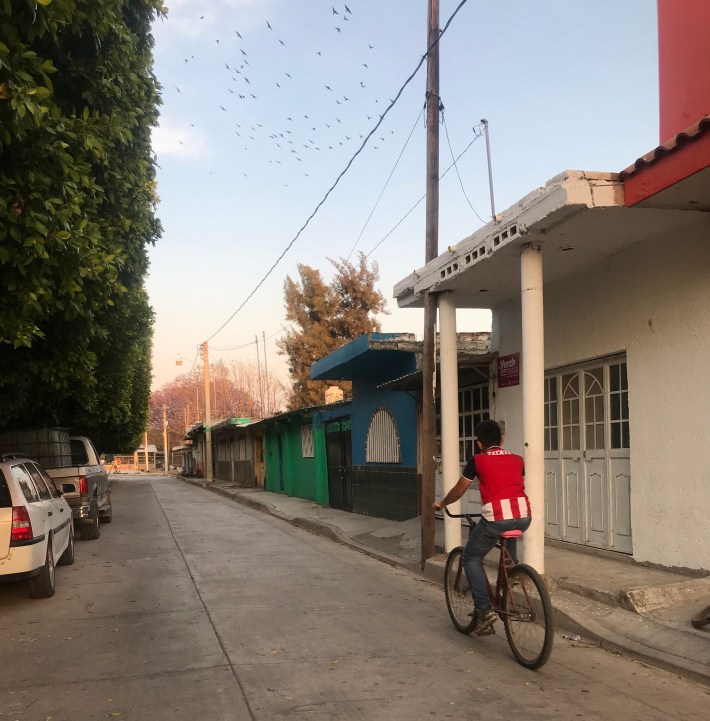This past weekend, I saw a performance by Carlos Vives, a famous Colombian singer, at Los Dells, a Latinx music and arts festival in Wisconsin. One of the songs he sang was “La Bicicleta” or “The Bike,” a hit song he recorded with his countrywoman Shakira, released in 2016. The entertaining video shows the two stars cruising around their hometowns of Santa Marta and Barranquilla on two wheels, enjoying life. At one point they even escape a traffic jam by hopping on bikes.
Before closing the show with this song, Vives spoke about the significance of the bike in Colombia and how cycling is a way of life there. He spoke with love about bicycles as a way of getting around and it was significant coming from a Latin American singer on a huge platform. In the United States bikes aren't usually associated with non-Western countries or people of color, but moments like these can help shift that perception.
Vives started singing “La Bicicleta” and the screen behind him revealed a colorful backdrop of bikes as he sang. I had always interpreted this song as basically being a love song between people, with the bike serving as an accessory. I saw Shakira sing it last year and she didn’t talk about the bikes like Vives did. But his performance made me realize that this is actually a love song about bikes.
It was pretty incredible to hear an entire crowd of mostly Latinx people singing along to a love song about bikes:
A mi manera, despelucado / En una bici que me lleva a todos lados (roughly, "With messy hair / On a bike that takes me everywhere")
I can’t quite describe the euphoric feeling, but it got me thinking about how celebration, art, and culture is tied to elevating the bike as a way of life for more people. The imagery and language typically associated with bikes in the U.S. does not often feature diverse cultures, nor does it use words that resonate culturally with people outside of the mainstream. I even struggle to find bike GIFs that feature people of color.
After my trips to Mexico this year, I tried to capture some of the cultural significance of bikes in my family’s towns because we need more of people of color elevating those narratives. We need more representations of diverse people on bikes to change the perception that bicycling is mostly something that white folks do.

What we experience through art, music, and literature matters. It informs and shapes how we see the world and who we see being part of that world. I think this is why I like saying “bici” instead of bike -- for some reason it feels more appropriate for who I am and the people I interact with.
If we can reflect our cultural backgrounds and experiences in biking through language, art, and music, we can open the doors for more people to be part of biking culture. The bike advocacy world needs more of this. Doing so also allows us to be imaginative in the ways we see biking and bikes in our lives. Art and culture help change narratives and, I think this ultimately leads to societal transformation.
Here are two of my favorite artistic representations of bikes in short video segments.
This one from AJ + Español features a 90-year old Chilean grandma describing her love of her bike. My favorite line, “Es mi compañera, es mi amiga. Yo sin ella no soy nada.” This translates to “She is my companion, she’s my friend. Without her, I am nothing.”
Este #DíaDelAbuelo, te compartimos una historia que llena el corazón de gozo y que además, te dará algunas lecciones de vida:
— AJ+Español (@ajplusespanol) August 28, 2018
Elena es una abuela de más de 90 años. Elena va a todos lados en bici.
¡Sé como Elena! pic.twitter.com/mXSaT4ilvv
This second one from 60 Second Docs features BMX rider Amir Oliver from Philadelphia and the Wheelie Boys. I love the line, “When I’m on a bike, I can express myself. Riding BMX is like art to me. It’s like painting a picture between the curbs.”





